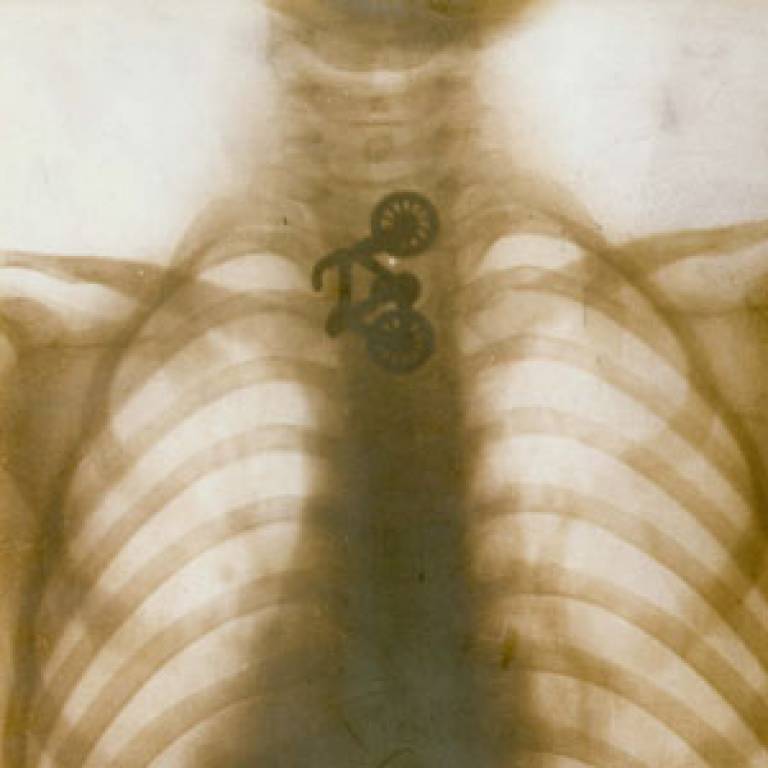Foreign Bodies: where does the familiar end and the foreign begin?
13 March 2013
A new exhibition exploring the theme of Foreign Bodies, including a sword that killed an eighteenth century sword swallower and pieces of skin tattooed with butterflies, opens at UCL on 18 March.

Foreign Bodies displays surgical curiosities, ancient artefacts and artworks from the collections of the four UCL museums and asks the question: How and why do non-human objects end up inside the human body?
"Many items in the exhibition are not usually on public display, including striking specimens from the Pathology Collections," said lead curator of the exhibition, research student Sarah Chaney (UCL Centre for the History of Psychological Disciplines).
"In the eighteenth century 'extraordinary eaters' came to the attention of surgeons. These were people who swallowed multiple objects in return for payment. The sword swallower's sword in the UCL collections fits into this category: unfortunately for this particular performer, he accidentally pierced his throat, and his heart and perforated oesophagus can also be found in the collections."
The exhibition explores how we draw the line between human and animal, living and inorganic. Alongside swallowed swords, coins, nails and - unexpectedly - a toy bicycle, are items that enter the body through less conventional ways.
For example ink is considered as a possible foreign body when introduced into the skin to create tattoos. Microbes could be seen as unwanted invaders and even a foetus can be considered a foreign body.
"Throughout time the experience of pregnancy has differed vastly and our collective perceptions of the foetus in utero have shifted with it," said Lisa Plotkin (UCL History), a researcher involved in the exhibition.
"Is the foetus a separate, foreign entity within a woman's sovereign body, or is the foetus an inextricably familiar thing? Where does a woman's body end and another life begin?"
The exhibition invites audiences to explore what is alien to us. Stone figurines depicting foreigners address the idea of defining communities by what is outside the culture. In this way primates may be considered the ultimate foreign bodies against which we define what it is to be human.
The display in the North Cloisters will be accompanied by a trail leading visitors around the four UCL museums including The Petrie Museum of Egyptian Archaeology and the Grant Museum of Zoology, as well as other sights of interest in UCL, such as the famous auto-icon of Jeremy Bentham.
Image: X-ray showing a swallowed toy bicycle 1906 from the Royal London Hospital Archive
Links
Event Listing
Foreign Bodies
Researchers in Museums
Extraordinary Eaters videos
 Close
Close

